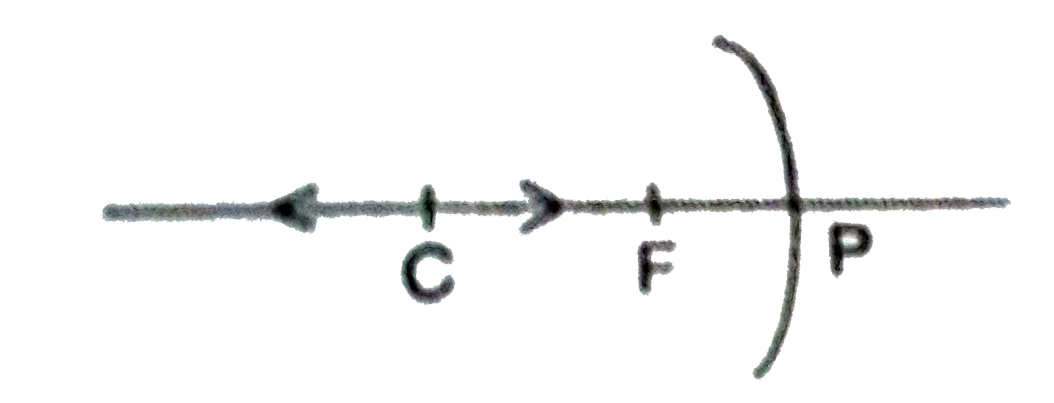After reflecton, a light ray which is incident along the principal axis of a mirror,
retraces its path
passes through center of curvature
makes zero angle with the normal.
All the above.
The correct Answer is:D
The light ray which is incident along the principal axis of a mirror falls normally on the mirror, and hence, it retraces its path.

From the figure it is clear that is passes through the centre of curvature.
As the line passing through the centre of curvature is perpendicular to the mirror, the angle made by the light ray with the normal is zero.
Topper's Solved these Questions
- LIGHTBOOK - PEARSON IIT JEE FOUNDATIONCHAPTER - LIGHTEXERCISE - EXAMPLE
4 Videos
- LIGHTBOOK - PEARSON IIT JEE FOUNDATIONCHAPTER - LIGHTEXERCISE - TEST YOUR CONCEPTS (VERY SHORT ANSWER TYPE QUESTIONS (FILL IN THE BLANKS))
9 Videos
- LIGHTBOOK - PEARSON IIT JEE FOUNDATIONCHAPTER - LIGHTEXERCISE - TEST 1
15 Videos
- KINEMATICSBOOK - PEARSON IIT JEE FOUNDATIONCHAPTER - KINEMATICSEXERCISE - ASSESSMENT TEST (TEST 2 (SELECT THE CORRECT ALTERNATIVE)
15 Videos
- MACHINES AND TOOLSBOOK - PEARSON IIT JEE FOUNDATIONCHAPTER - MACHINES AND TOOLSEXERCISE - CONCEPT APPLICATION (LEVEL 2)
12 Videos
Similar Questions
Fill in the folowing blank with a suitable word :
A ray of light which is parallel to the parincipal axis of a convex mirror, appears to be conming form……..after reflection form the mirror.
View SolutionRadius of curvature of concave mirror is R and a light ray is incident on it parallel to principal axis at a height h above the principal axis. Calculate distance of the point from pole of mirror where reflected ray intersects with principal axis.
View Solution
Knowledge Check
A light ray is incident along the principal axis of a mirror after reflection ______.
Aretraces its pathBpasses through centre of curvatureCmakes zero angle with the normalDAll the aboveA light ray is incident along the principal axis of a mirror after reflection ______.
Aretraces its pathBpasses through centre of curvatureCmakes zero angle with the normalDAll the aboveA light ray is incident along the principal axis of a mirror after reflection ______.
Aretraces its pathBpasses through center of curvatureCmakes zero angle with the normal.DAll the above.
Mark the statement True (T) or False(F).A ray of light incident parallel to the principal axis of a spherical mirror retraces its path after reflection.
View SolutionDraw a ray diagram to show the path of the reflected ray corresponding to an incident ray of light parallel to the principal axis of a convex mirror and show the angle of incidence and angle of reflection on it.
View SolutionA light ray travelling parallel to the principal axis of a concave mirror strikes the mirror at angle of incidence θ. If radius of curvature is R, then after reflection, the ray meets the principal axis at a distance d from the centre of curvature then d is
View SolutionWhen a ray of light travelling parallel to the principal axis of a concave mirror strikes at the polished surface of mirror, the reflected ray
View Solution
Rays parallel to principal axis, incident on the spherical mirror at different heights from principal axis are focused at different points. And due to this reason we cannot define unique focus. This is known as spherical aberration. Angle of incidence θ shown in figure depends on the height of ray above principal axis. Focal length of spherical mirror can be easily written in terms of angle θ shown in figure as follows :
f=R−R2secθ
Here R is radius of curvature of mirror. The light rays which are very close to principal axis are known as paraxial rays and rays far away from principal axis are called marginal rays.
What will be the focal length for ray which is incident at an angle 60∘?
View Solution
